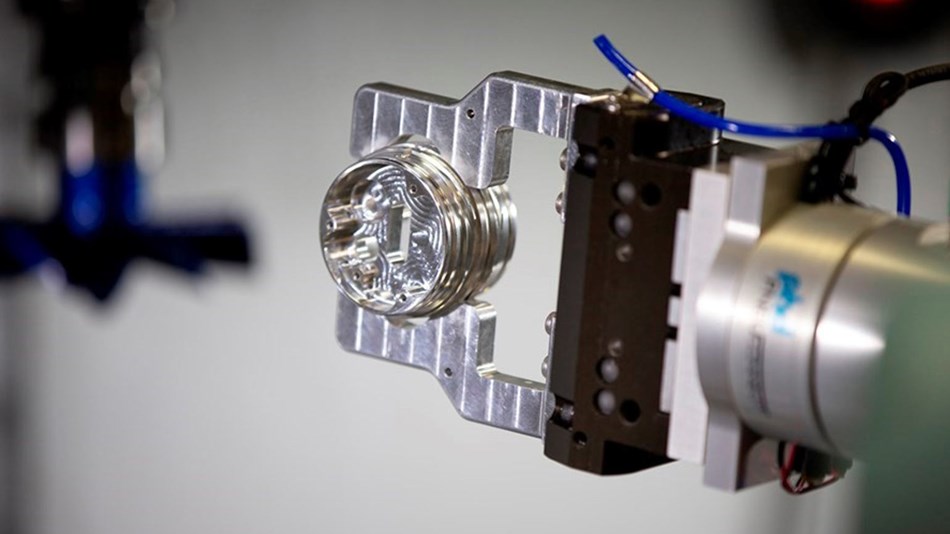Do you know what a gripper is and its many possible uses? Grippers are incredibly versatile tools that allow you to easily manipulate items in the environment around you. From DIY projects and rectifying everyday problems to industrial operations, grippers offer numerous capabilities to help us address our needs more effectively.
In this article, we will overview what a gripper is and how it can be used in various situations. Whether you are looking for a fast solution or require precision craftsmanship – there’s sure to be something for everyone when it comes to utilizing the power of these clever devices.
Table of Contents
What Are Grippers?
Grippers, also known as robotic hands, are a type of robot that use specialized tools to grasp, lift, and manipulate materials. They can be used in all fields—from factory assembly lines to remote exploration. Their unique gripping abilities allow them to move items with precision beyond the scope of human fingers and have significantly impacted industrial processes.
Grippers have been developing since 1983 and provide valuable insight, convenience, and function for any situation where manipulation is necessary. From interactions between robots to picking objects off production lines, grippers surprise and delight users with their range of applications. Because they’re designed to handle delicate items like glassware or food without damaging them, grippers offer a world of convenience few could imagine just decades ago.
What Are The Different Types Of Grippers?
Grippers come in many shapes and sizes. The most common types are soft grippers, designed to handle soft materials like cloth or foam. A soft gripper usually has rubber or foam pads on the ends, allowing them to grip items gently and move them around.
Sleeve grippers are another type of gripper, which use a cylindrical shape to fit around objects that may be too large for soft grippers. These types of grippers can provide even more stability when lifting heavier loads. Vacuum grippers are also used, as they employ a vacuum suction system to hold items securely without damaging them. It makes them perfect for delicate tasks like food preparation or precision assembly.
How Are Grippers Used?
Grippers offer a range of ways to manipulate items. In industrial settings, they can help with repetitive tasks like moving parts from one station to another on an assembly line. It can save time by eliminating the need for human movement and increase accuracy when combined with robotic arms or other automated systems.
In everyday life, grippers are often used in DIY projects such as repairing furniture or assembling intricate models. With the right tools and some creativity, grippers can make almost any job easier by taking away the need for human hands to do complex work. Grippers are also increasingly being used for remote exploration and material handling in hazardous environments that may not be safe for humans.
From simple everyday chores to large-scale industrial uses, grippers are versatile tools that offer convenience and control in any situation. Whether you’re looking for a quick fix or require precision craftsmanship, the unique abilities of grippers have something to offer everyone.
Benefits Of Using Grippers
Grippers offer many advantages that make them an attractive option for many businesses. Their ability to handle delicate materials without damage makes them ideal for production lines and sensitive tasks. They are also capable of repetitive motions with high accuracy, saving time and money in the long run.
Additionally, grippers require less maintenance than traditional machines and can be programmed to do multiple tasks simultaneously. It makes them an excellent choice for large-scale operations that need to get the job done quickly and efficiently.
Finally, grippers provide more flexibility when addressing difficult or complex situations in an industrial setting. By providing greater control over the movement of materials, they can help prevent accidents and reduce downtime caused by human error. In short, grippers offer a level of convenience and accuracy that’s hard to match.
How To Choose The Right Gripper For Your Needs?
The right gripper for your needs will depend on the tasks you are planning to do. Soft grippers are well-suited for handling delicate items like cloth or foam, while sleeve and vacuum grippers can provide extra stability and suction when lifting heavier loads. Consider the types of materials that will be handled, as some may require more specialized tools.
In addition to material requirements, you should also consider the size of the objects being manipulated. If a large object is needed to be gripped, then a larger-sized gripper may be needed to get it done correctly. It would help if you also thought about how often the same task will be repeated and whether precision movements are necessary to complete it correctly.

